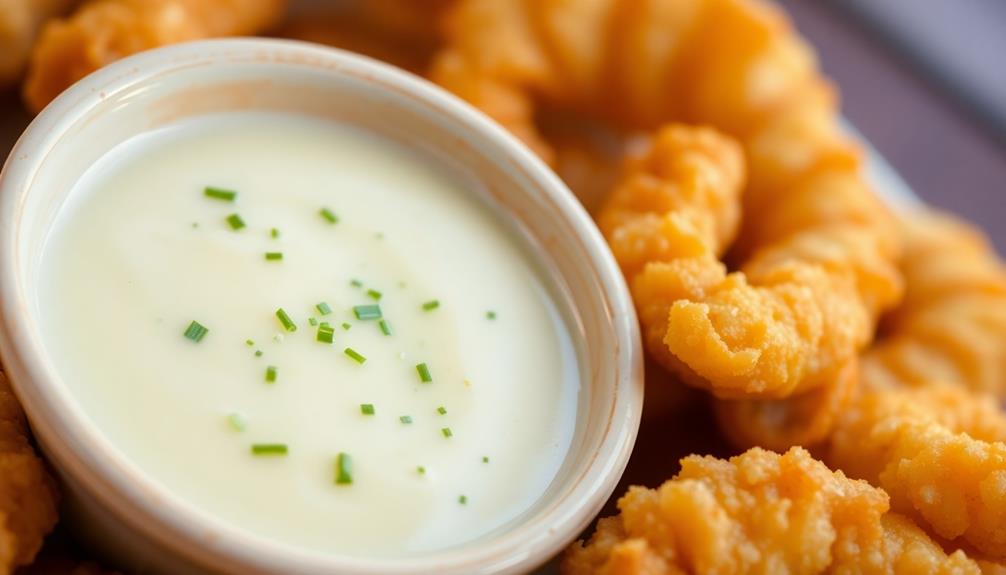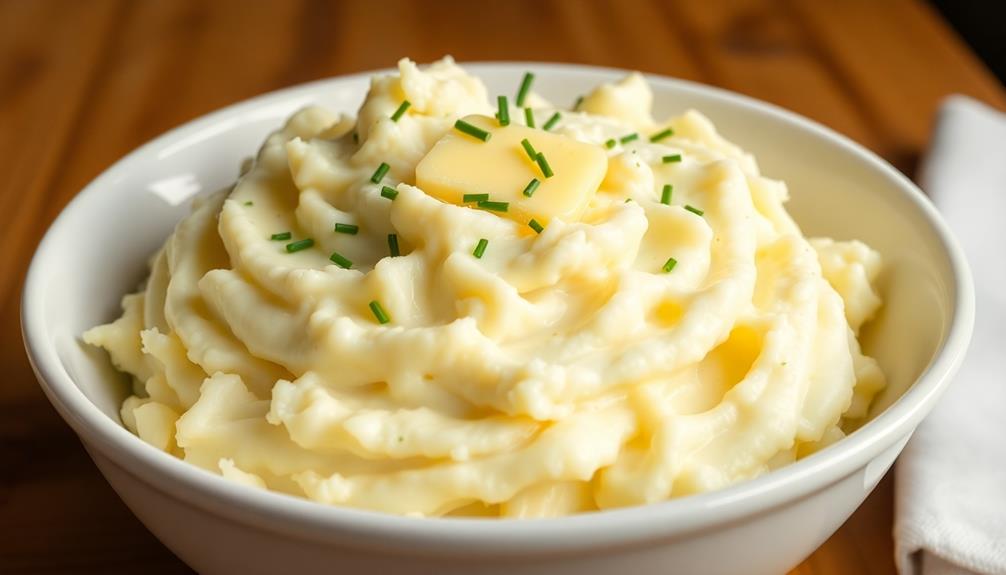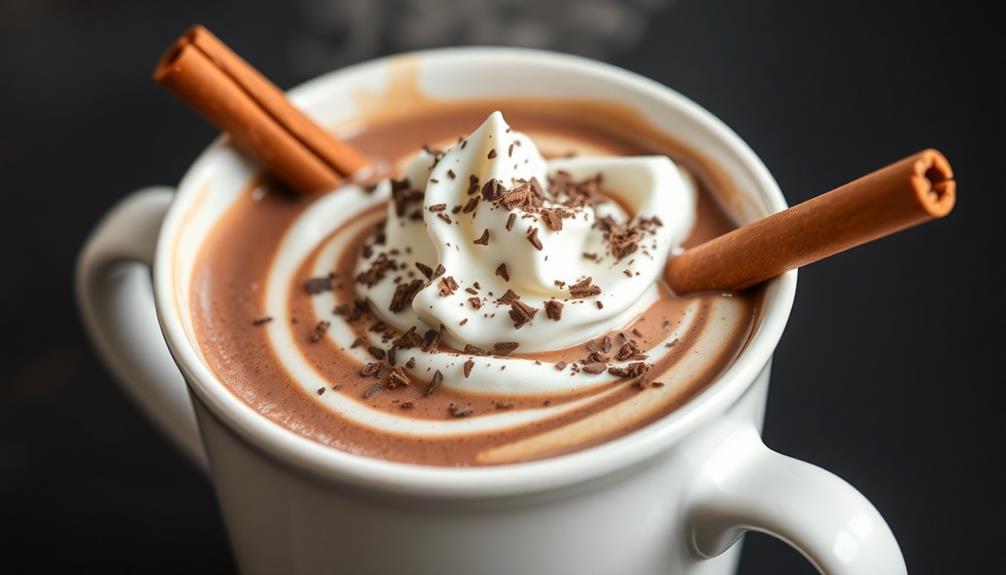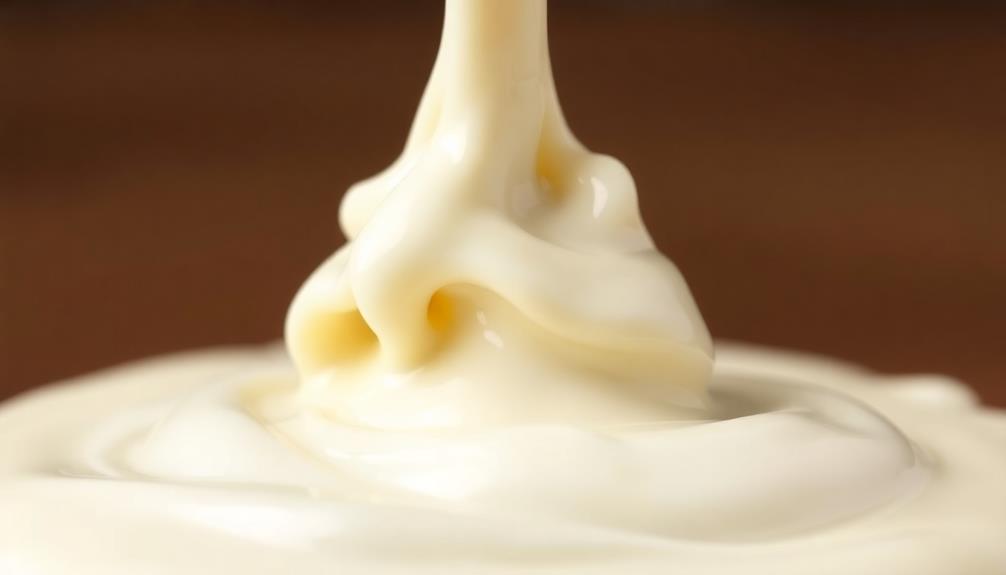Whip up a delectable classic tartar sauce with just a few simple ingredients. Start with a base of creamy mayonnaise, then stir in tangy dill pickle relish, bright lemon juice, and a touch of Dijon mustard. Season it with salt and pepper to taste. For an extra layer of flavor, you can also add capers or fresh herbs like dill or parsley. Chill the sauce before serving to allow the flavors to meld. This versatile condiment pairs perfectly with fried seafood, crab cakes, and more. Keep reading to discover even more ways to customize your tartar sauce. For a zesty twist, try mixing in a dash of horseradish or a pinch of smoked paprika to elevate the overall flavor profile. You can also experiment with different pickles or vinegars for a unique take on this classic. And if you’re looking to expand your homemade condiment collection, be sure to check out our homemade teriyaki sauce recipe for a perfect blend of sweet and savory goodness that works wonders with grilled meats or stir-fries.
Key Takeaways
- The classic tartar sauce recipe features a creamy mayonnaise base, enhanced with dill pickle relish, lemon juice, Dijon mustard, salt, and pepper.
- Optional ingredients like capers and fresh herbs can be added to the sauce for additional flavor complexity.
- The sauce is prepared by mixing the ingredients until well combined, and then chilling it to allow the flavors to meld.
- Adjusting the ratio of mayonnaise to pickles, and the amount of lemon juice, can help achieve the desired tanginess.
- Tartar sauce is a versatile condiment that pairs well with fried seafood, crab cakes, sandwiches, and more, providing a balance of flavors.
History
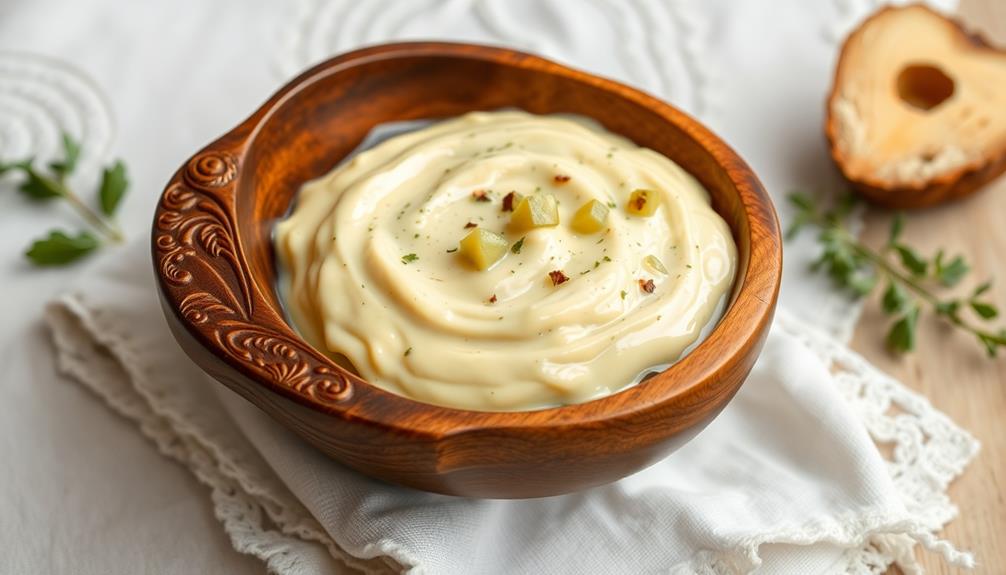
Tartar sauce has a rich and storied history, dating back to the 16th century. The name originates from the Tartar people of Central Asia, who were known for their love of sauces and condiments. As European cuisines expanded, the recipe for tartar sauce evolved, incorporating local ingredients and regional flavors.
In the 1800s, tartar sauce became a popular accompaniment to fried seafood dishes, particularly in coastal regions of Europe and North America. The tangy, creamy sauce provided the perfect balance to the crisp, salty texture of fried fish or shellfish.
Today, tartar sauce remains a versatile condiment, appearing on restaurant menus and in home kitchens around the world. Its flexibility allows for endless variations, with cooks adding their own unique twists to the classic recipe.
Whether served alongside seafood, used as a dip, or even incorporated into other dishes, tartar sauce continues to delight and satisfy taste buds.
Recipe
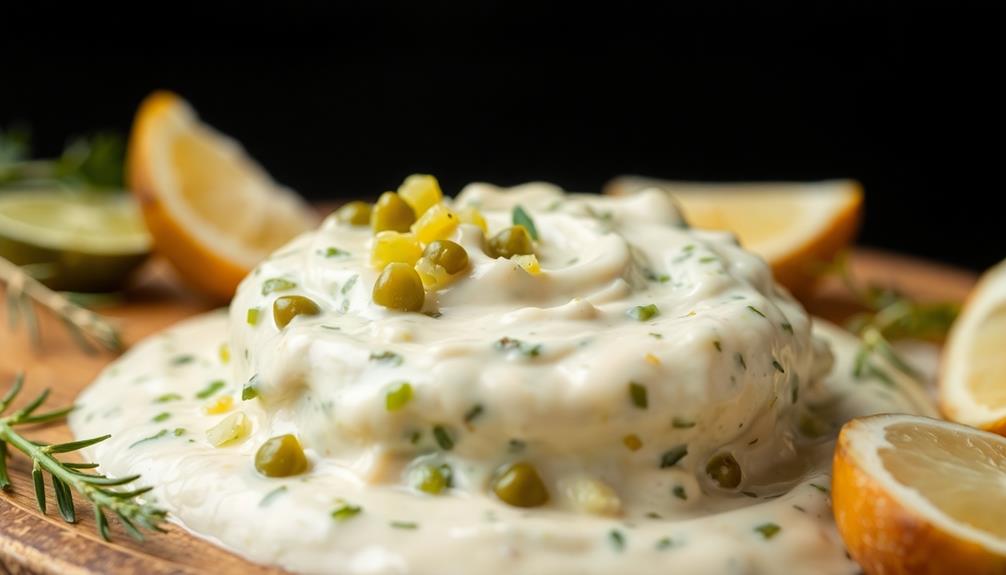
Tartar sauce is a classic condiment that pairs perfectly with fried seafood dishes. This creamy sauce is easy to make at home and can be tailored to your personal taste preferences. The key to a delicious tartar sauce is balancing the tangy, salty, and slightly sweet flavors. A *classic tartar sauce recipe* typically includes mayonnaise, finely chopped pickles, capers, and fresh lemon juice for a bright, zesty kick. Some variations may also add herbs like dill or parsley, or a touch of Dijon mustard for extra complexity. Whether served with fish and chips or crab cakes, it’s the perfect complement to elevate any seafood dish. For those looking to experiment, a classic tartar sauce recipe can be enhanced with unique additions like minced shallots, a dash of hot sauce, or even a sprinkle of smoked paprika for a subtle depth of flavor. The versatility of this sauce allows you to customize it to suit any meal or occasion. Once you’ve mastered your go-to version of a classic tartar sauce recipe, you’ll never want to go back to store-bought again.
To begin, tartar sauce is typically made with mayonnaise as the base. This provides a rich, creamy texture that coats the seafood beautifully. The mayonnaise is then combined with various ingredients that add depth of flavor.
- 1 cup mayonnaise
- 2 tablespoons dill pickle relish
- 1 tablespoon lemon juice
- 1 teaspoon Dijon mustard
- 1/4 teaspoon salt
- 1/4 teaspoon ground black pepper
In a small bowl, whisk together the mayonnaise, pickle relish, lemon juice, Dijon mustard, salt, and black pepper until well combined. Taste and adjust seasoning as needed.
For best results, let the tartar sauce chill in the refrigerator for at least 30 minutes to allow the flavors to meld.
When serving, the tartar sauce can be used as a dipping sauce for fried seafood, such as fish and chips or crab cakes. It also makes a great topping for grilled or baked fish. The cool, creamy texture of the tartar sauce provides a delightful contrast to the crispy, hot seafood.
Cooking Steps

To make the perfect tartar sauce, start by mixing mayonnaise and chopped pickles in a bowl.
Then, stir in a bit of lemon juice to brighten the flavor.
Don't forget to finely chop some onions and fold them in, seasoning the whole mixture with salt and pepper.
Once everything's combined, chill the tartar sauce before serving it alongside your favorite seafood dishes.
Step 1. Mix Mayonnaise and Pickles
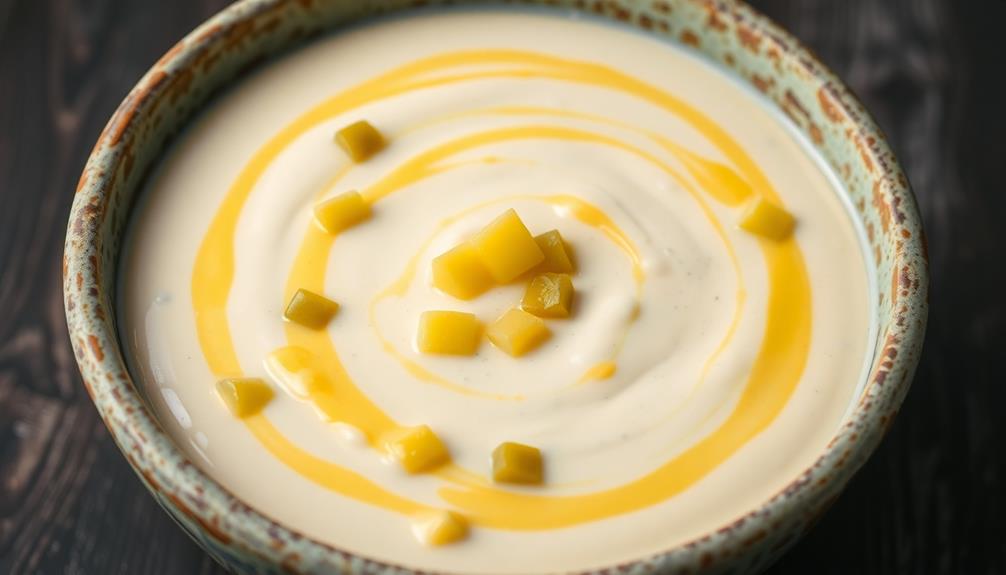
Mix the mayonnaise and chopped pickles in a small bowl until well combined. The creamy mayonnaise provides a rich base, while the tangy, crunchy pickles add a delightful contrast.
Be sure to use dill or sweet pickle relish to achieve the classic tartar sauce flavor. Adjust the ratio of mayonnaise to pickles to suit your personal taste preferences – some prefer a tangier sauce with more pickles, while others enjoy a creamier, mayonnaise-forward version.
Once the ingredients are mixed, give the tartar sauce a taste and make any necessary adjustments. If it's too tart, add a bit more mayonnaise; if it needs more zip, stir in an extra spoonful of pickles.
The key is to find the perfect balance that complements your fried seafood, fish, or other dishes. With just a few simple steps, you can create a homemade tartar sauce that's far superior to store-bought varieties.
Step 2. Add Lemon Juice
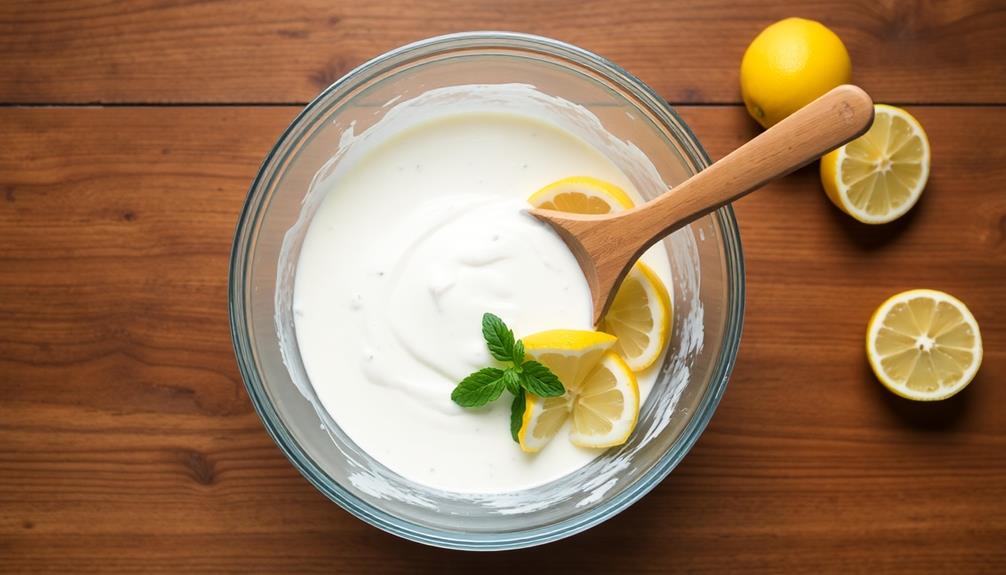
Next, a splash of lemon juice can help brighten the flavors and balance the richness of the mayonnaise. The citrusy tang of lemon serves as a perfect counterpoint, cutting through the creaminess and adding a refreshing zing to the overall profile.
When incorporating the lemon juice, start with a teaspoon and gradually increase the amount to suit your personal taste preferences. Feel free to adjust the quantity based on the intensity of the lemon and your desired level of tartness.
The lemon juice not only enhances the flavor but also helps to thin out the consistency of the tartar sauce, making it more pourable and spreadable. Be mindful not to overdo it, as too much lemon can potentially overwhelm the other ingredients.
With the right balance, the lemon juice will help to elevate the tartar sauce, creating a harmonious blend of flavors that pairs beautifully with a variety of dishes.
Step 3. Stir in Finely Chopped Onions
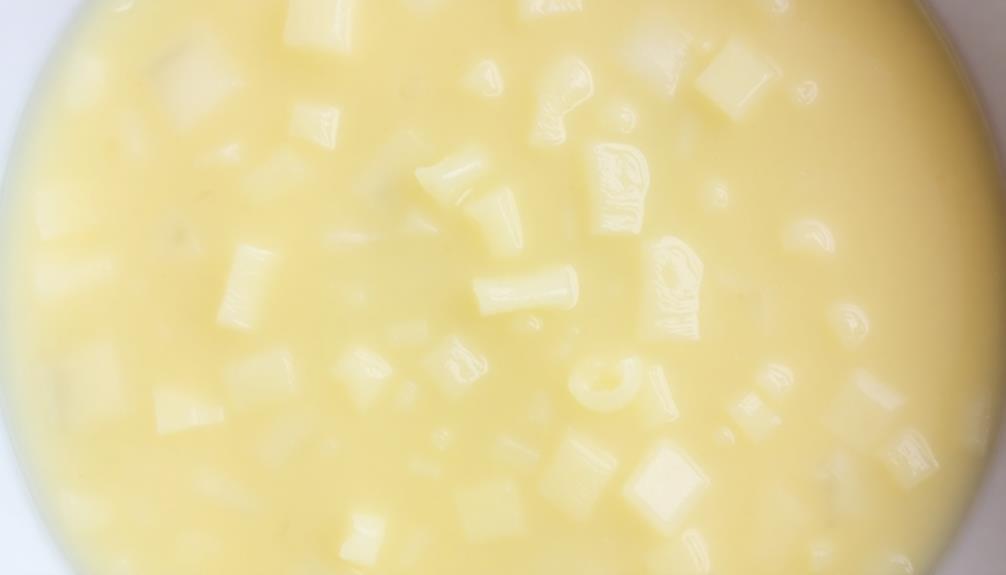
After adding the lemon juice, stir in some finely chopped onions. This will add a lovely crunch and subtle sweetness to your tartar sauce.
When chopping the onions, aim for a fine, even dice, about 1/4-inch in size. This will ensure they fully incorporate into the sauce, providing flavor in every bite. The onions' pungent aroma and slight bite will nicely balance the richness of the mayonnaise.
Be sure to chop the onions just before adding them, as their flavor will be most pronounced when freshly cut. Avoid letting the chopped onions sit for too long, as they can become overpowering.
Gently fold the onions into the sauce using a rubber spatula or wooden spoon, taking care not to over-mix and disrupt the texture. The finished tartar sauce should have tiny, evenly distributed onion pieces that complement the other ingredients.
Step 4. Season With Salt and Pepper
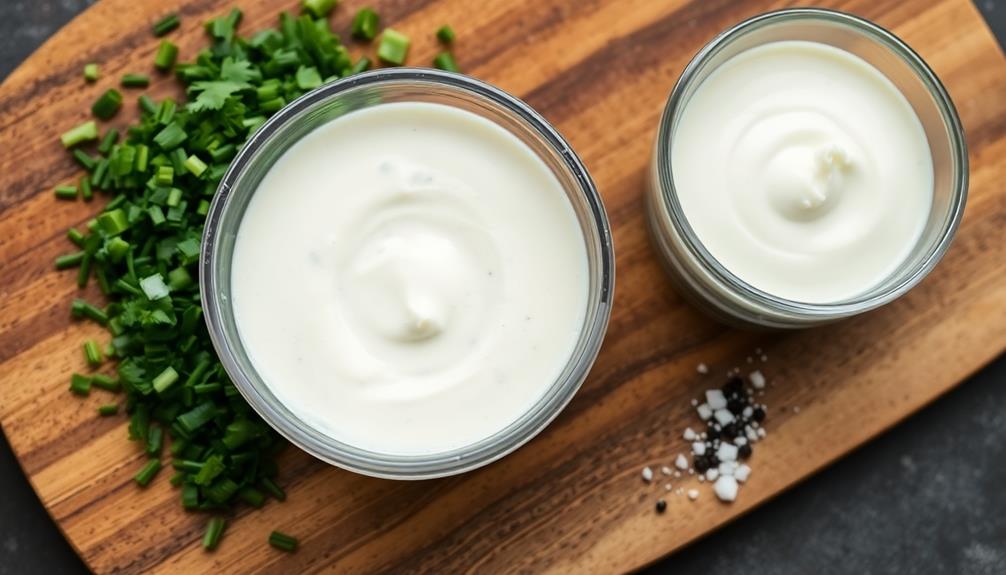
Season the tartar sauce with a pinch of salt and a few grinds of black pepper. This simple seasoning helps to balance the flavors and bring out the best in the other ingredients. The salt enhances the overall taste, while the pepper adds a subtle kick that complements the creamy texture of the sauce.
When seasoning, start with just a small amount of each and give the sauce a taste. You can always add more if needed, but it's harder to fix an over-seasoned sauce. Aim for a well-balanced flavor that doesn't overwhelm the other components.
The right amount of seasoning can make all the difference in a great tartar sauce. It's the finishing touch that ties everything together, ensuring each bite is bursting with flavor.
Season to your personal preference, adjusting the salt and pepper until it hits the perfect spot on your taste buds.
Step 5. Chill Before Serving
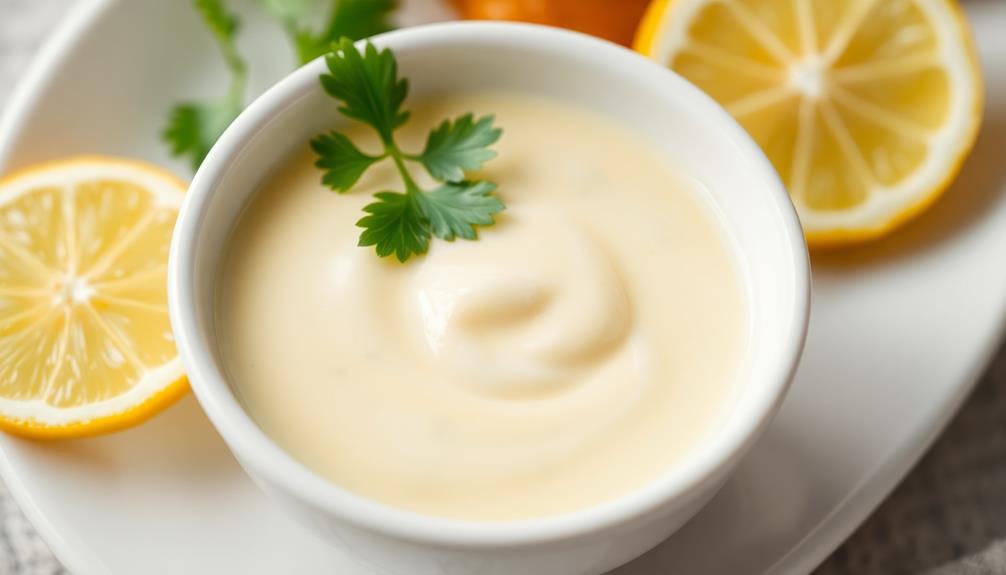
Once you've seasoned the tartar sauce to your liking, it's time to let the flavors meld. Cover the bowl with plastic wrap or a lid and place it in the refrigerator for at least 30 minutes, or up to 24 hours. This chilling process allows the ingredients to fully incorporate, ensuring a harmonious blend of flavors.
During this time, the mayonnaise will thicken, and the acidity from the lemon juice or vinegar will mellow, creating a smooth, creamy texture. The onion and pickle flavors will also have a chance to infuse the sauce, adding depth and complexity.
For best results, plan to make the tartar sauce a few hours ahead of when you'll be serving it. This allows ample time for the flavors to develop and meld together.
When ready to serve, give the chilled sauce a quick stir and transfer it to a serving bowl or ramekin. Pair it with your favorite fried seafood, or use it as a topping for burgers or sandwiches.
Final Thoughts
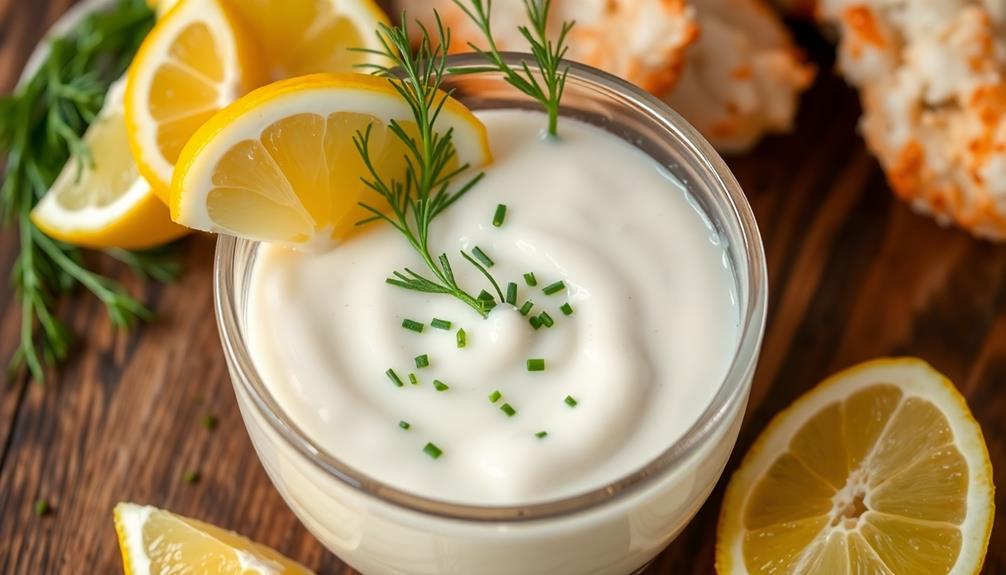
Tartar sauce is a versatile condiment that can elevate a variety of dishes, from fried seafood to sandwiches. Whether you're preparing it for a casual family dinner or a fancy gathering, this homemade version is sure to impress.
The combination of tangy mayonnaise, zesty pickles, and aromatic herbs creates a flavor profile that perfectly complements a wide range of foods.
Once you've mastered this basic tartar sauce recipe, don't be afraid to experiment with additional ingredients. Try adding a splash of lemon juice for a brighter flavor, or fold in some finely chopped capers for a touch of brine.
You can also adjust the consistency to your liking, making it thicker for dipping or thinner for spreading.
As you enjoy this delectable sauce, remember that the true beauty of homemade tartar sauce lies in its ability to enhance the natural flavors of your favorite dishes. Embrace the versatility, and let your taste buds be your guide.
Frequently Asked Questions
How Long Does Homemade Tartar Sauce Last in the Fridge?
Homemade tartar sauce can typically last 3 to 5 days in the refrigerator when stored properly in an airtight container. However, be sure to check for any signs of spoilage before using it.
Can I Use a Different Type of Vinegar in the Recipe?
You can definitely use a different type of vinegar in the tartar sauce recipe. The acidity and flavor profile of the vinegar will affect the overall taste, so feel free to experiment with different varieties.
Is Tartar Sauce Gluten-Free?
Yes, tartar sauce is typically gluten-free. The main ingredients in tartar sauce are mayonnaise, pickle relish, lemon juice, and sometimes capers or onions – none of which contain gluten. Just be sure to check the labels of any pre-made tartar sauces to confirm they're gluten-free.
Can I Make Tartar Sauce in Advance?
Yes, you can make tartar sauce in advance. The sauce keeps well in the refrigerator for up to a week, allowing you to prepare it ahead of time and have it ready when needed.
What Is the Best Way to Store Leftover Tartar Sauce?
You can store leftover tartar sauce in an airtight container in the refrigerator for up to 1 week. Make sure to give it a good stir before using, as the ingredients may separate during storage.
